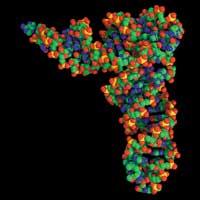Have small RNA awakened excessive hope?
Some scientists have warned that the hope placed on small RNA or RNA interference (RNA) may be excessive. According to them, in order to use small RNAs to treat diseases now incurable, it is necessary to answer a series of basic questions that will not be achieved overnight.

In fact, the journal Science publishes annually the list of the most important scientific advances of the year, and last year the small RNA was placed first. What have they done to deserve that place? Well, RNA, in addition to following DNA orders in protein formation, has shown that these small but special parts have to do with gene expression. Scientists found that it could be used to block disease-related genes and began researching how to use them to cure certain diseases.
RNA based technology has already been used to eliminate some mouse tumors, as well as to curb the proliferation of HIV in human cell cultures. However, its use in the clinic is subject to major obstacles such as that RNA is much weaker than DNA, which only lasts a few minutes in dissolution, so they must find a way to stabilize it.
Buletina
Bidali zure helbide elektronikoa eta jaso asteroko buletina zure sarrera-ontzian











